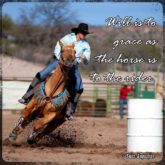 A class action is a lawsuit initiated by one or more people who have suffered the same or similar injuries from the same act of wrongdoing and decided in a single case. Everyone with the same claim doesn’t have to file their own separate lawsuit. Generally it takes at least 30-50 people with similar claims to qualify as a class action. Single person is generally enough to file a lawsuit, a lawyer then files a suit in behalf of the class and let the court to formally recognize the case as a class action. Some common class actions include:
A class action is a lawsuit initiated by one or more people who have suffered the same or similar injuries from the same act of wrongdoing and decided in a single case. Everyone with the same claim doesn’t have to file their own separate lawsuit. Generally it takes at least 30-50 people with similar claims to qualify as a class action. Single person is generally enough to file a lawsuit, a lawyer then files a suit in behalf of the class and let the court to formally recognize the case as a class action. Some common class actions include:
• Product liability
• Personal injury
• Securities class action
• Consumer class action
• Employment class action
• Corporate class action
• Environmental class action
Soliciting enough plaintiffs to join a class action on a collective basis is a daunting task. One digital era approach in meeting this challenge involves reaching plaintiffs through the strategic use of social media. Here are ten ways social media can bring a class action together:
1. A website in plain language that is easily understood by people in all levels of education can draw people with similar injury to read more about the class action and join. Class actions have been filed in the US regarding the VW Scandal by groups of consumers that are affected. In Australia, Bannister Law launched the first class action against Volkswagen Australia about VW diesel vehicles that were fitted with defeat devices to cheat emission test. People who bought Volkswagen made between 2008 and 2015 can join the class action via the official VW Class Action website http://vwclassaction.com.au
2. About 80% of online adults are actively using social media. Social networking sites like Facebook, Twitter, LinkedIn have the potential to increase the ability to reach great number of potential plaintiffs inexpensively and recruit them to join the lawsuit. People who suffer the same injury can give their testimonials, information and communicate with other claimants using social media.
3. Class action website can benefit from keyword search ads. This form of advertising guarantees that a website will appear on the top of the search page when a user searches for keywords related to a particular class action. Keyword search ads enable possible plaintiffs to easily find the website that contains notice materials and case information to join the class action lawsuit.
4. Sharing website links via social networking sites like Facebook, LinkedIn and Digg is possible by adding a line of code to the notice website. Users can share the links to the site by clicking on the link to show on their newsfeed or local activity. This way their friends and connection can see the link and they too will be informed about the case and determine if their rights are affected.
5. Notice providers can place banner ads in different sizes on sites, networks and portals frequently visited by possible plaintiffs. Banner ads provide immediate connection to the case website with a single click.
6. Social media ads are used by notice providers as part of their class action media program. Facebook or Twitter ads have the ability to reach specific target audience segments. Mass audience on social media sites can be connected on the case website when they clink on the ad and they can register on the site to join the case.
7. Blogs and well written articles offer opportunities to reach niche audiences. Press releases and a brief explanation of the case relevance to the blog’s target audience and outreach to other bloggers can result in postings with links to the case website.
8. Videos can convey important information about the class action in a shorter time. Viewers don’t have to read long text or click on different pages to learn about the case. Videos with clickable links direct users to the case website which provide the opportunity for them to opt in and join the settlement.
9. Public forum is like a town meeting where everyone in the community can join. Forum offer people with different backgrounds a chance to express their feelings about key issues. It can provide case providers with feedback and help them to explain about the settlement.
10. Social media is not just a broadcasting channel for law firms to bring possible plaintiffs to a class action lawsuit together. It can also be used to monitor social conversations and sentiments of affected people. Social listening through social media is valuable in monitoring and staying informed about key issues facing the class.










